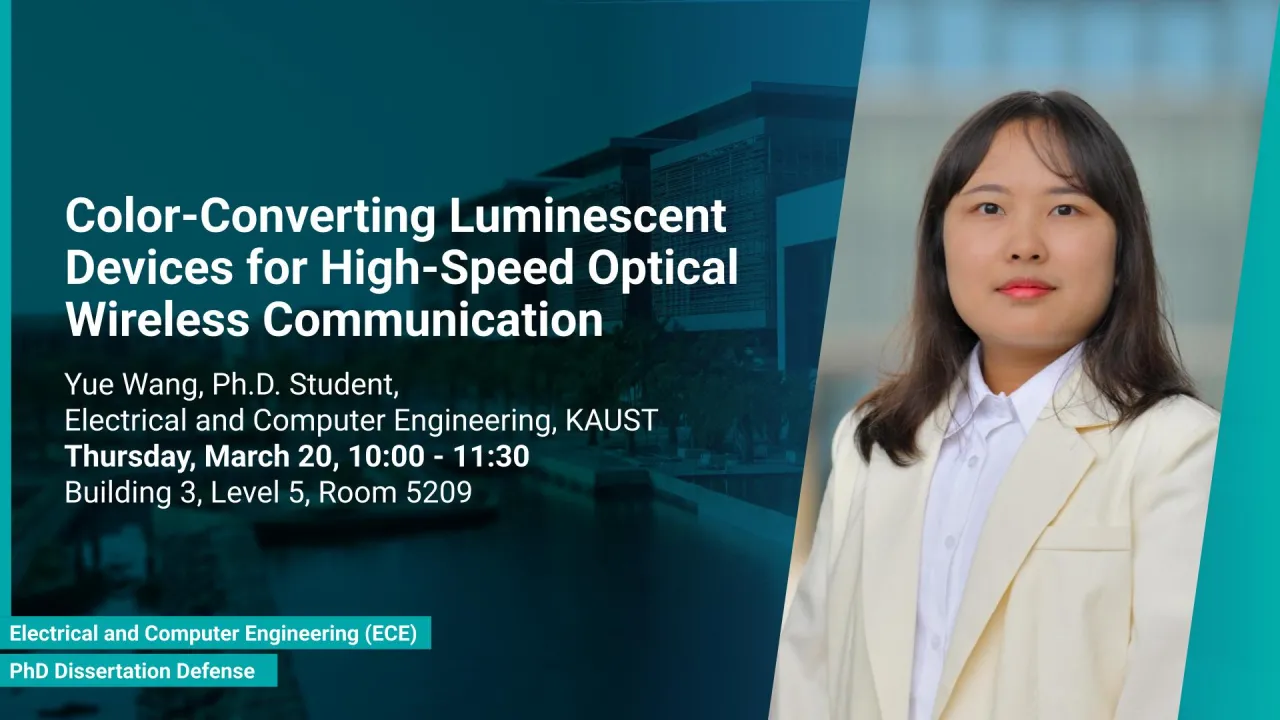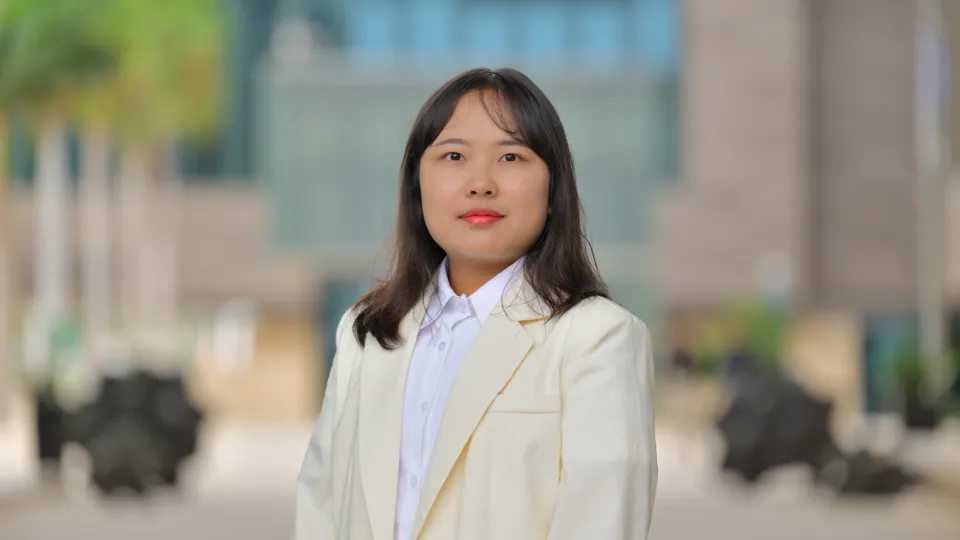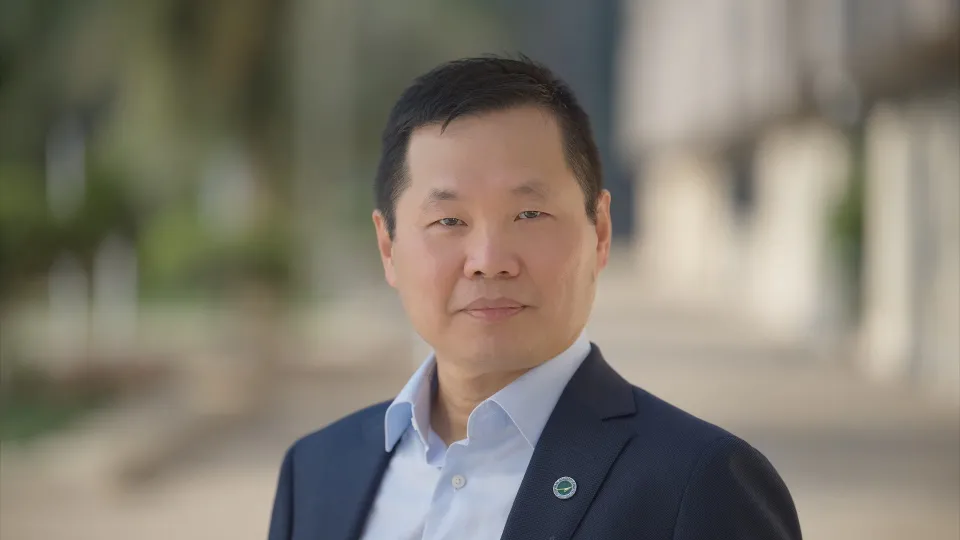
Color-Converting Luminescent Devices for High-Speed Optical Wireless Communication
This dissertation advances optical communication systems by exploring and integrating novel luminescent materials, including MOFs, perovskite nanosheets and quantum dots, and organic fluorophores, to enhance speed, efficiency, and versatility in applications ranging from high-speed visible-light communication and ultraviolet free-space communication to underwater wireless optical communication and optical amplification.
Overview
Color-converting technology relies on the Stokes shift and anti-Stokes shift of luminescent materials, which absorb photons at one wavelength and re-emit them at different wavelengths. Initially used in phosphors for fluorescent tubes, this technology has been developed with the increasing use of solid-state light sources, such as light-emitting diodes (LEDs), superluminescent diodes, and laser diodes. The advancements of these compact light sources have driven the field of high-speed optical communication, creating a demand for phosphors with additional functionalities beyond illumination. These include wide field-of-view photodetection, energy harvesting, and optical beam tracking. Notably, in the quest for higher data rates and more efficient communication systems, ultraviolet (UV) free-space communication (FSO) and visible-light communication (VLC) have emerged as promising technologies. Integrating fast-acting luminescent materials into optical wireless communication (OWC) channels enables the use of the UV-visible spectrum for data transmission and reception, offering a viable solution for an enormous bandwidth of ~400 THz and enhanced security 6G network while complementing the terahertz and other radio frequency communication networks.
This research investigates various materials, including metal-organic frameworks (MOFs), hybrid organic-inorganic perovskite nanosheets, perovskite quantum dots, and organic fluorophores, aiming to enhance the performance of optical communication systems. Key findings include the ultrafast energy transfer capabilities of MOFs in mixed-matrix membranes (MMMs) for VLC, achieving significant improvements in communication speed and efficiency; Bandgap engineering of MOFs, tunable emission wavelength from blue to green was achieved, which was then utilized in the wavelength-division multiplexing channel to increase the link capacity; A gigabit-per-second communication channel was established using two-dimensional hybrid organic-inorganic perovskite nanosheets. Additionally, the study explores a series of organic fluorophores, with their potential for UV-based optical OWC, and demonstrates the feasibility of using fiber-coupled luminescent concentrators for underwater wireless optical communication (UWOC). This innovation enables efficient large-area, wide-field-of-view photodetection, and simultaneous optical beam tracking, potentially solving the challenge of beam alignment in turbulent underwater optical communication systems.
As optical-to-optical amplification is crucial for long-distance optical data transmission, the plastic optical fiber amplifier for the visible light spectrum based on all-inorganic perovskite quantum dots was demonstrated. Leveraging the amplified spontaneous emission of perovskite quantum dots, high optical gain properties under one-photon and two-photon excitations were achieved in the visible spectral range, followed by extensive investigations of the gain behavior with varying pump and signal power. This work addressed the issue of high attenuation during light propagation in plastic optical fiber, which is promising for developing practical solutions to real-world problems.
By integrating cutting-edge materials science with optical communication systems, this dissertation contributes to the advancement of high-speed, efficient, and versatile optical communication systems, and provides potential solutions for existing challenges using color-converting technologies. The findings have significant implications for the future of communication technologies, offering pathways to more robust and high-performance systems. The thesis concludes by discussing the future directions for enhancing the stability and performance of these luminescent optoelectronic devices in practical optical communication systems, emphasizing the ongoing need for innovation in this rapidly evolving field.
Presenters
Brief Biography
Yue Wang is a Ph.D. candidate at the Photonics Laboratory at King Abdullah University of Science and Technology (KAUST), under the mentorship of Prof. Boon S. Ooi. She earned her B.Eng. in Electronic Science and Technology from the University of Electronic Science and Technology of China (UESTC) in 2020. She received her master's degree in Electrical Engineering from KAUST in 2021.
Yue Wang's research focuses on semiconductor optoelectronics, high-speed color-converting luminescent devices, and optical wireless communication. She specializes in characterizing color-converting materials, designing and fabricating luminescent optoelectronic devices, and developing optical wireless communication systems.

